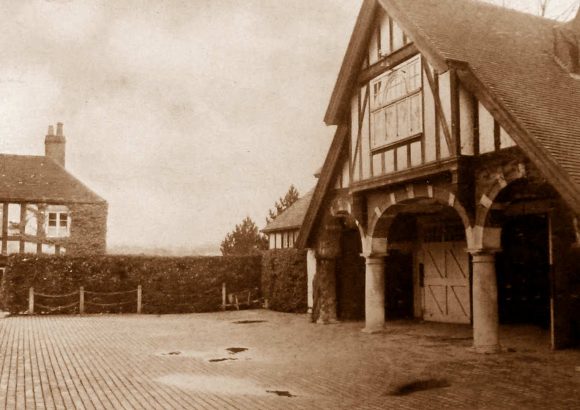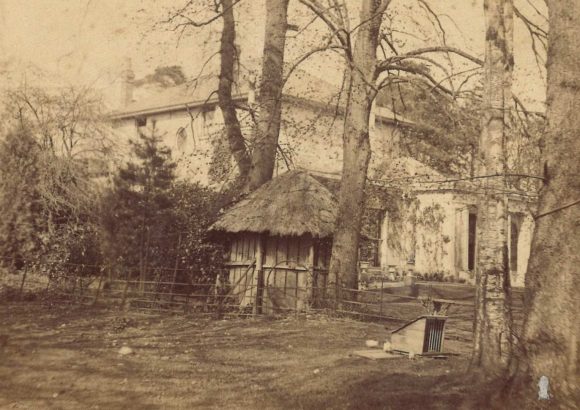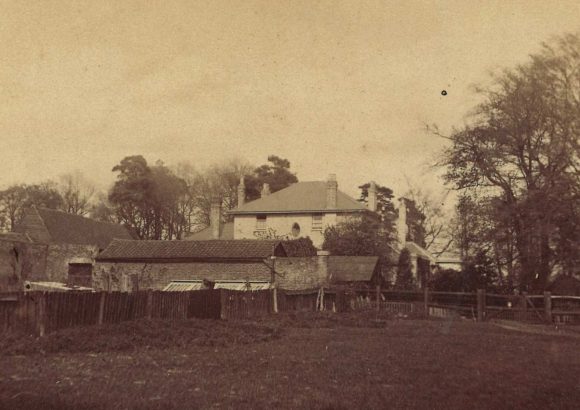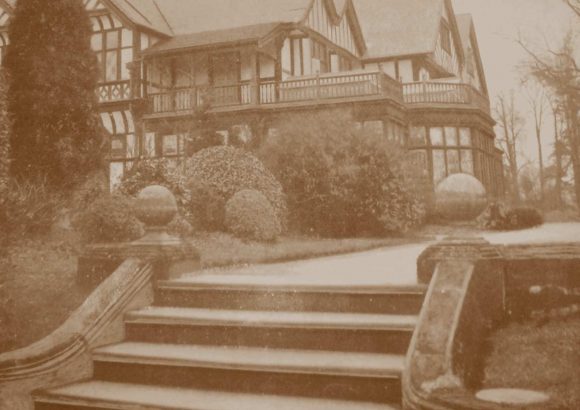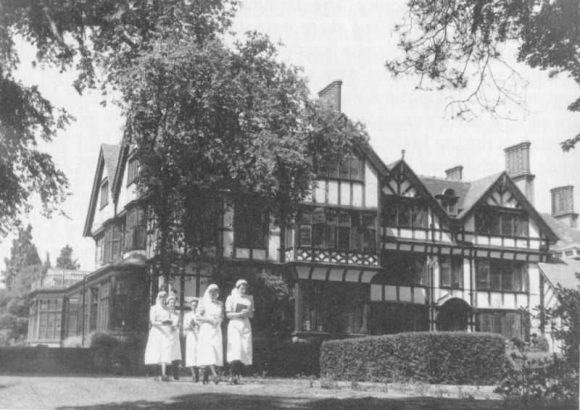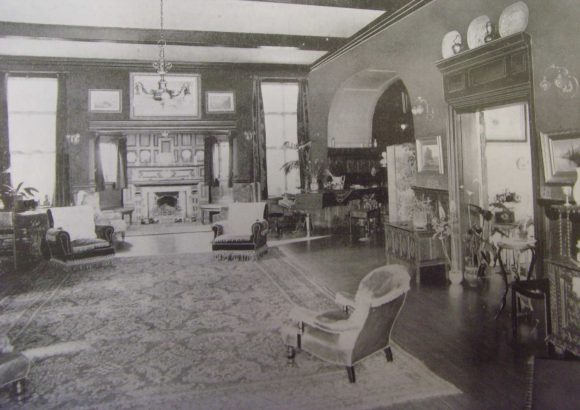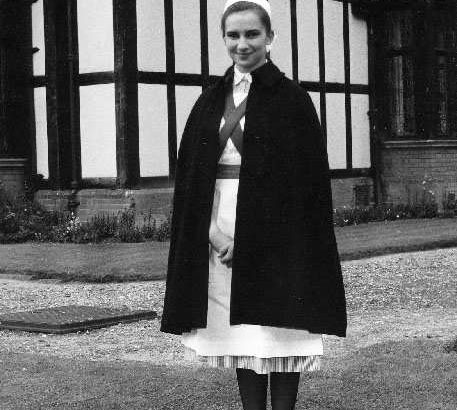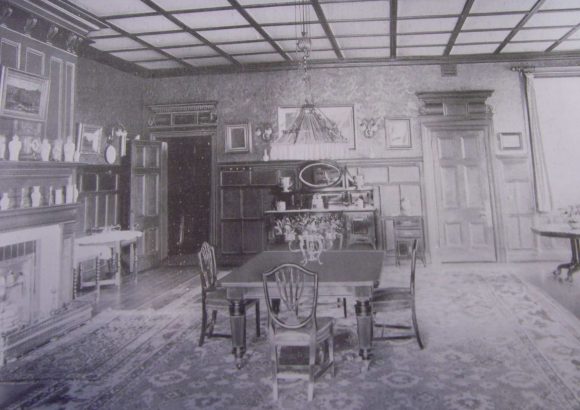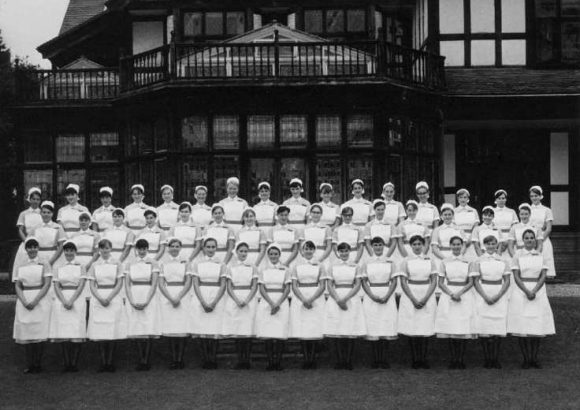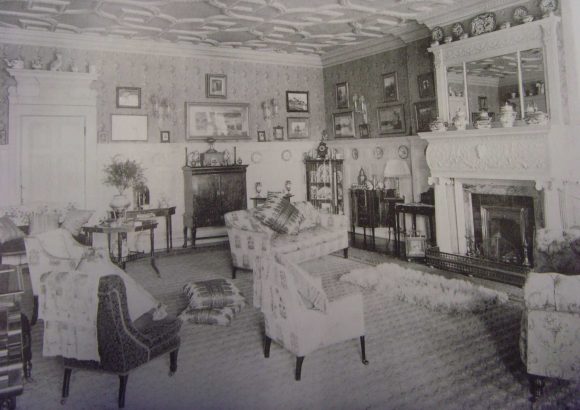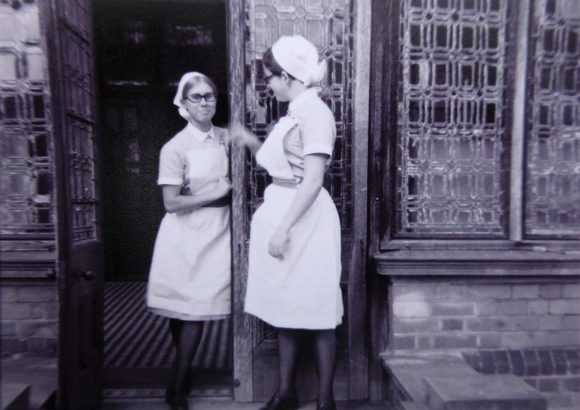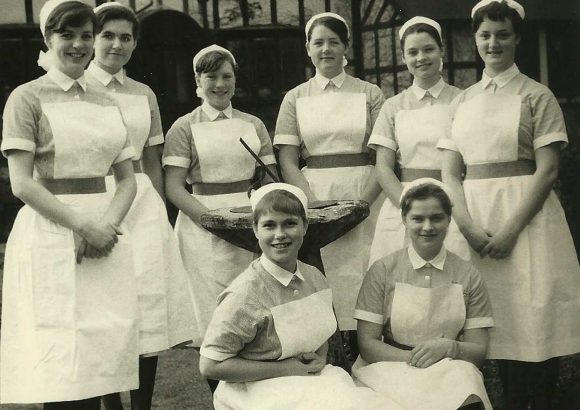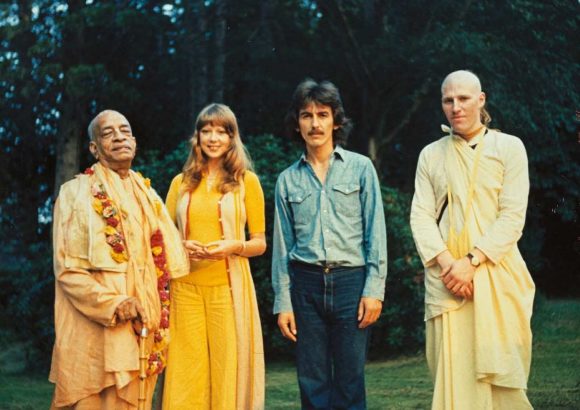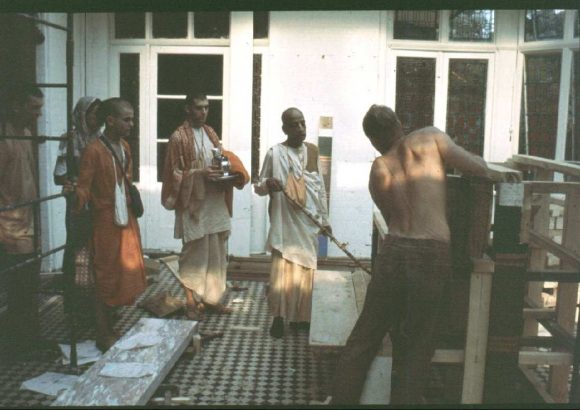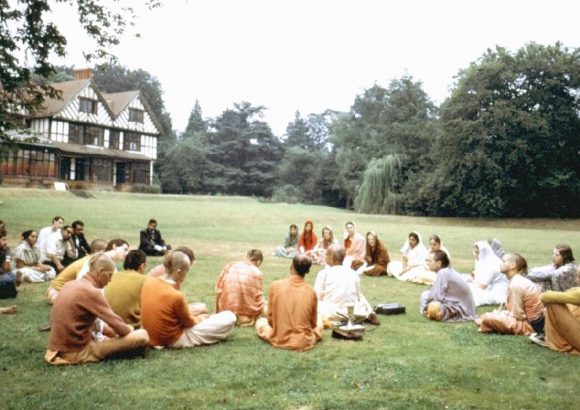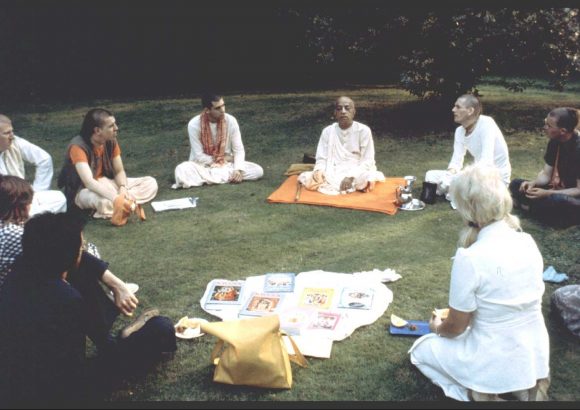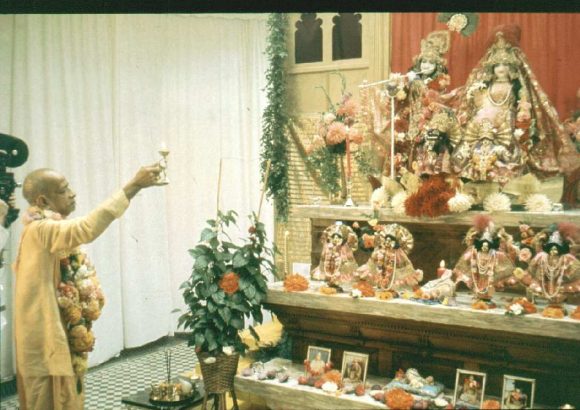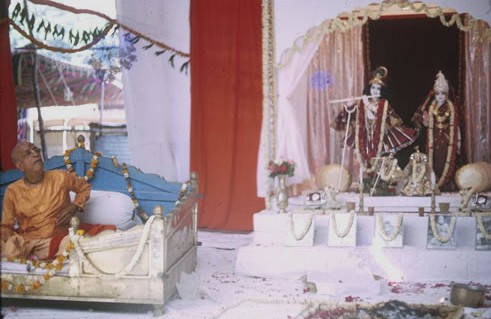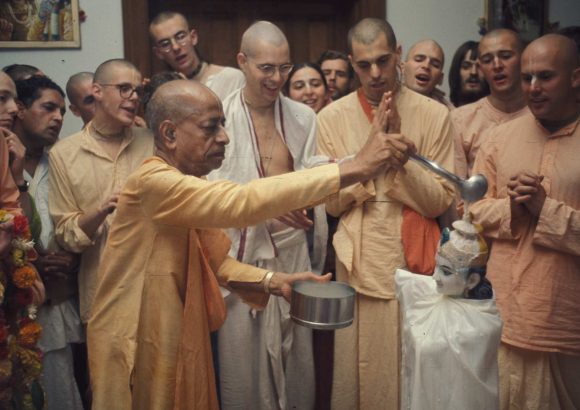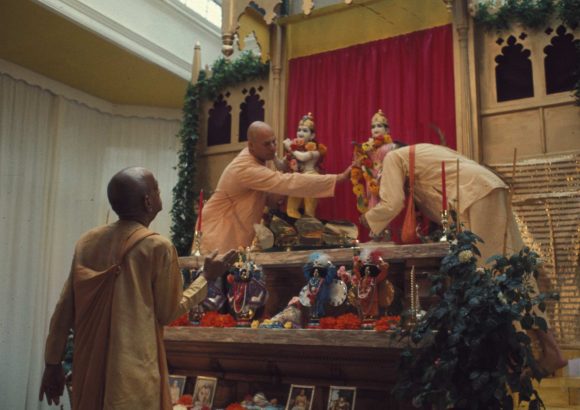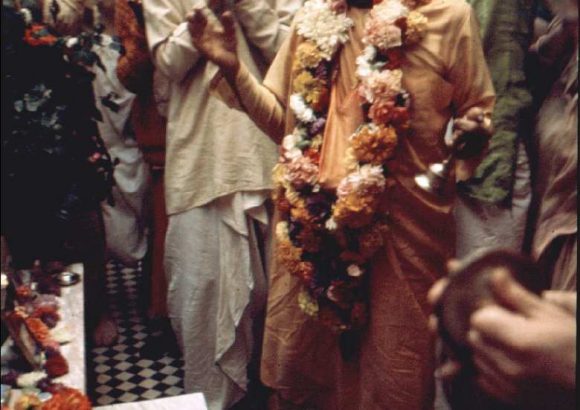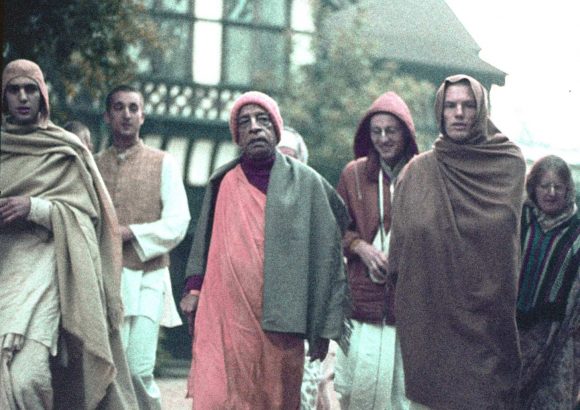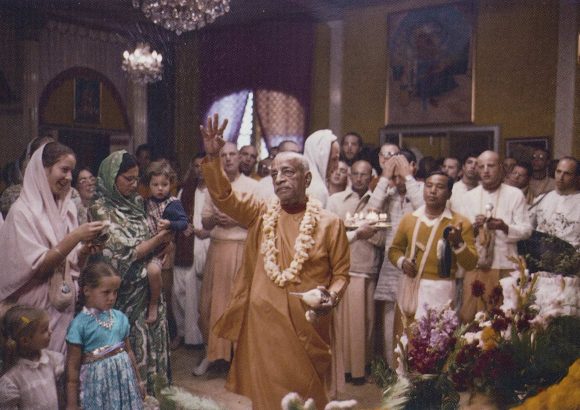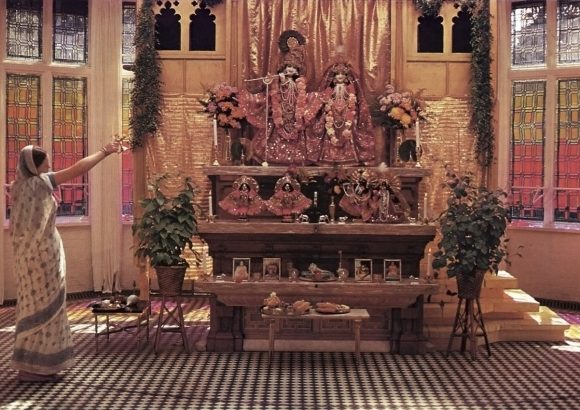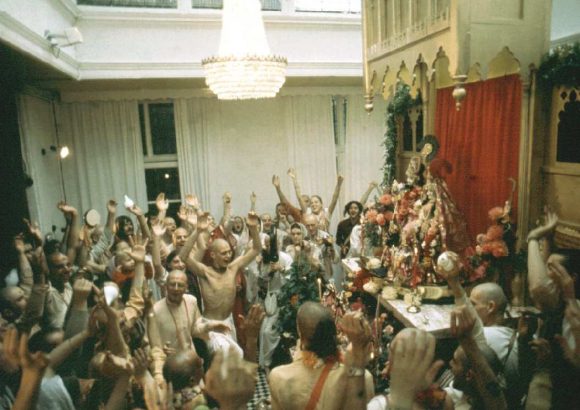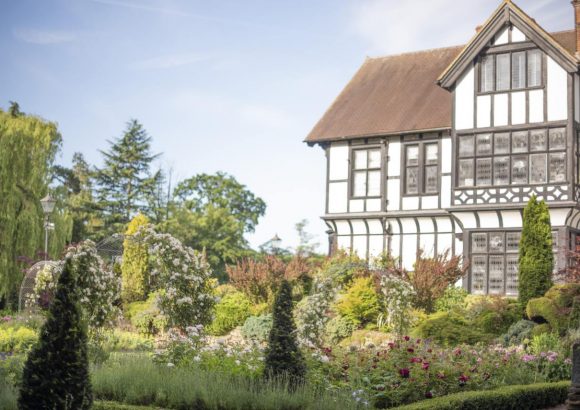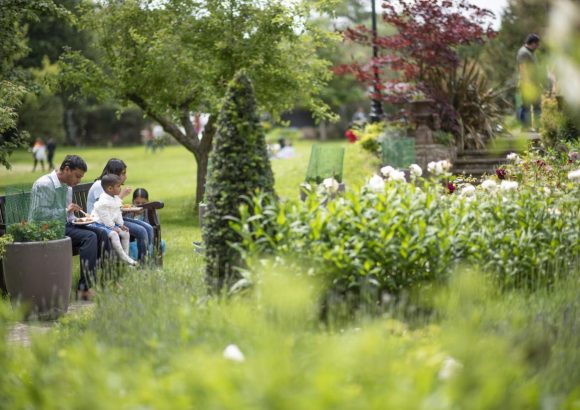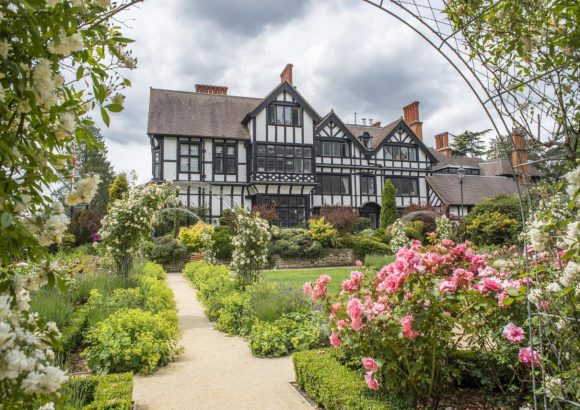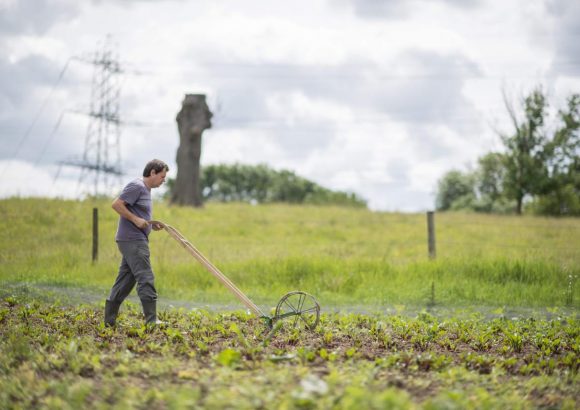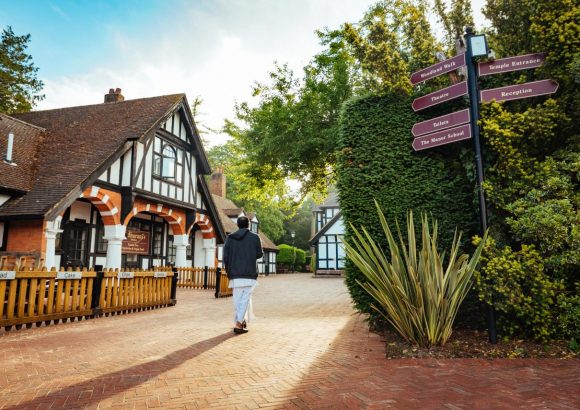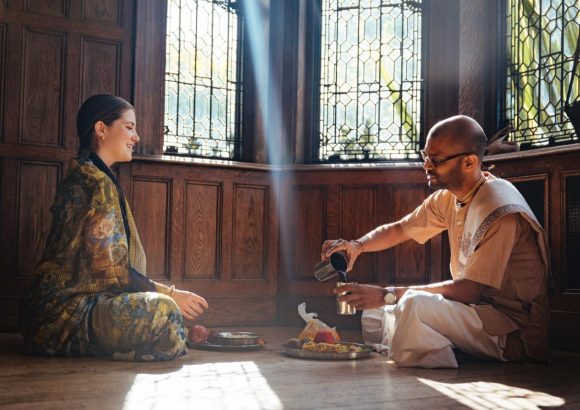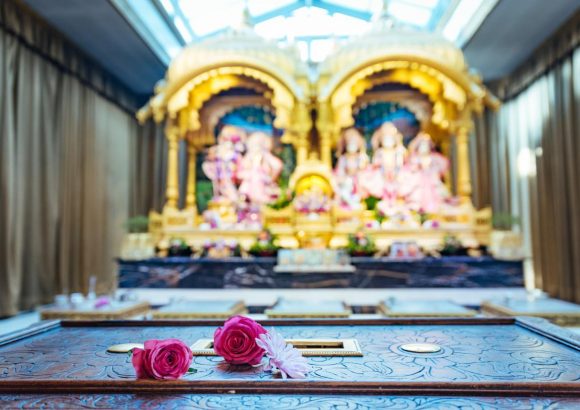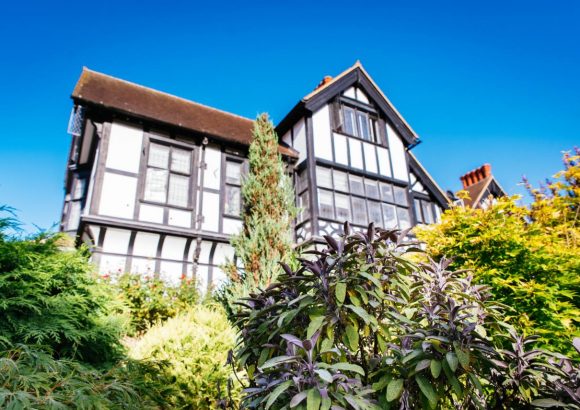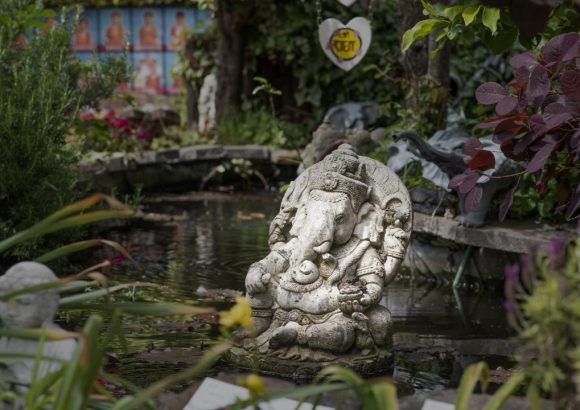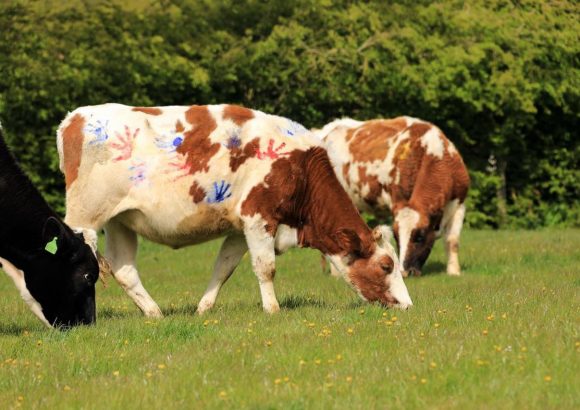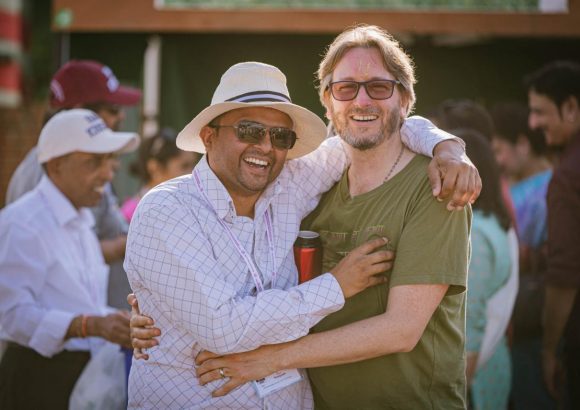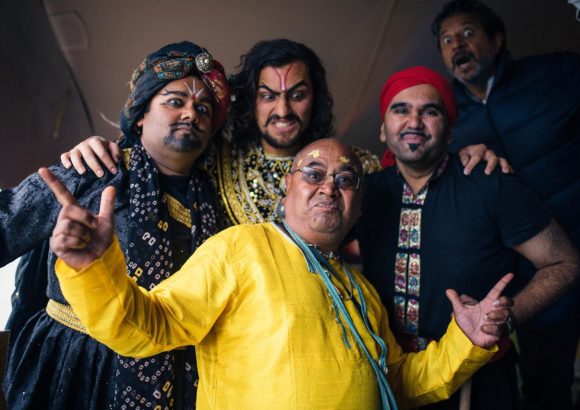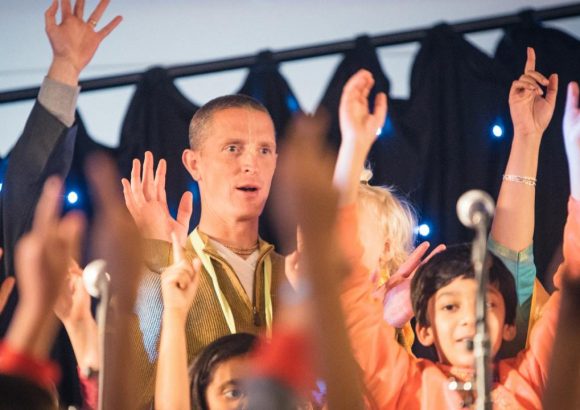The Manor’s history
Early History
The estate now called Bhaktivedanta Manor can be traced back to the 13th century, when the Abbot of Westminster granted land at Aldenham to Thomas Picot. Thus Picot’s Manor was a name derived from its earliest known holder. Thomas Picot then passed on the land to his son Geoffrey and it was then passed on to various other families.
In the fifteenth century, the annual rent for Picot’s Manor was 16 shillings. It is significant that there are rumors that the cows on the premises supplied milk which was delivered to the courts and drunk by King Henry VIII.
In the early 1700s, a Georgian-style manor house was built on the site. In 1884, however, most of this house was pulled down, and a larger one was built in its place. This larger building was designed in mock-Tudor style, and this is the building which is still present today.
The 20th Century
In 1912, Picot’s was resold for £17,000, and around 1923 it was renamed Piggott’s Manor to make it sound more English. During part of the Second World War, the property was used as an RAF officers’ mess and hospital. Then, in 1956, Piggott’s Manor was bought by St Bartholomew’s Nursing College. In the following years, hundreds of young women received intensive residential training in traditional nursing.
In 1972, a Hare Krishna devotee called Dhananjaya Das saw that the property was for sale, and he encouraged George Harrison to buy it for ISKCON. In February 1973, the purchase was completed and the devotees moved in, after which it was renamed Bhaktivedanta Manor in honour of A. C. Bhaktivedanta Swami Prabhupada. Bhaktivedanta, an ancient Sanskrit word, means ‘the conclusion or summary of all spiritual knowledge.’ Prabhupada saw Bhaktivedanta Manor as his movement’s European headquarters, and it was the last place he visited before passing away in Vrindavan, India in 1977.
By the late 1970s, attendance at Bhaktivedanta Manor had increased significantly. An agreement between ISKCON and Hertsmere Council was signed, allowing six major public events a year, but this was followed by an attempt to place a much stricter ban on Manor activity. In May 1996, however, John Gummer MP of the Department of the Environment granted planning permission for the Manor to construct an access road and to remain a place of public worship and religious festivals.
George Harrison and the Manor
Despite The Beatles incredible fame and fortune, due to the pressures of touring and the constant attention from public and media, peace of mind and happiness had escaped them. So, in 1967 they travelled to Rishikesh. This trip to India was part of a sudden fascination of everything Indian by the vibrant and searching youth of the late 1960s.
Soon, however, The Beatles returned to London, developing a taste for Indian spirituality, but not finding full satisfaction. George continued his search and meanwhile Shyamasundar das, Mukunda das and other disciples of Srila Prabhupada moved to London in order to establish a temple.
In 1969, both George and Shyamasundar das had their wishes fulfilled when they met at a function at Apple Records. After spending some time together, George invited Shyamasundar das to his house and the relationship began from there. When Srila Prabhupada arrived in Britain both George and John were deeply impressed by him. Once, on a car journey from France to Portugal, George and John chanted Hare Krishna for 17 hours non-stop!
George’s interest in Krishna Consciousness and the devotees continued to grow. By this time, The Beatles were married and started to work on their own separate projects. In 1970, George produced the Radha Krishna Temple album with the devotees, a track from which featured in the top ten record sales in that year. He also wrote many songs, which included devotional references. One such song was “My Sweet Lord”, which included the Hare Krishna mantra in the chorus.
In 1970 George donated ISKCON funds to pay for the printing of a book, Krishna the Supreme Personality of Godhead, which contains the pastimes of Lord Krishna, with commentary by Srila Prabhupada.
By 1972, ISKCON was growing very rapidly around the world. The London temple, which was then at Bury Place near the British Museum, was getting much too small. George asked a British devotee, Dhananjaya das, to choose a large property not too far from London. Several properties were investigated, but finally they settled on the building we know today, Bhaktivedanta Manor.
When Bhaktivedanta Manor was donated, Srila Prabhupada said of George, “Because he has given shelter to Krishna by providing this temple, Krishna will surely provide shelter for him.” Just before Srila Prabhupada left this world in 1977, he removed the ring on his right hand and said to the disciples around him, “This is for George, give it to him.”
Over the years that followed, George kept in contact with Shyamasundar das and Mukunda Swami, who always respected his wish not to be in the limelight. George became a loving father, worked on a great variety of films, studied landscape gardening and always kept Lord Krishna deep within his heart.
By the 1990’s, a campaign to save Bhaktivedanta Manor from closure by Hertsmere Council was well under way. George was observing the development of the Campaign and was giving his full moral support, although preferring not to be in the media limelight.
Unfortunately by the mid 1990’s George was suffering from various forms of cancer. On December 31st 1999, a terrible attempt on George’s life took place: Someone broke into his home and attacked him with a knife, to which he called upon Krishna’s name. Fortunately, his faithful and loving wife Olivia came to his rescue.
On Thursday 29th November 2001, George sadly passed away in Los Angeles. Naturally, people all around the world were deeply saddened by George’s passing. He was a truly remarkable person who touched the hearts of millions around the world through his messages of love and peace.
The Manor today
With the new land, the estate grew from the initial 17 acres to a generous 77 acres. The campaign itself also increased the fame of ISKCON and won the respect of the media, politicians, interfaith groups and Hindu communities across the world. It is also significant that today, the temple community has a much better relationship with Hertsmere Council. Because of their faith and hard work, victory was finally achieved and ISKCON took a major step forward.
Today, Bhaktivedanta Manor hosts about 10,000 school children on an annual basis as part of their educational school curriculum, who enjoy ox cart rides, engaging workshops and tasty vegetarian food. Numerous civil weddings are conducted on the premises, and many courses are taught based on ancient Vedic culture and the teachings of Bhakti-yoga. There are also Open Days every summer, and cultural evenings and dinners are held throughout the year.
One of the most recent developments over the last few years has been the extensive renovation of the Manor building, both internally and externally. The property has now been restored to its original glory, as it was in 1884. The Manor leaders also recognised the need for additional facilities on the estate to accommodate community needs and avoid overcrowding in the main building.
For this reason, an additional 2000-square-metre building was commissioned. Construction of the new facility, named the Sri Krishna Haveli, was completed in the summer of 2020. Although very modern in design, the Haveli does not overshadow the original mock-Tudor mansion. To complement the local area and respect its culture, oak, timber, tile, and traditional red brick with stone paving were chosen as typical of the area of Hertfordshire and its surroundings. Thus the design simultaneously respects the past and looks to the future.

